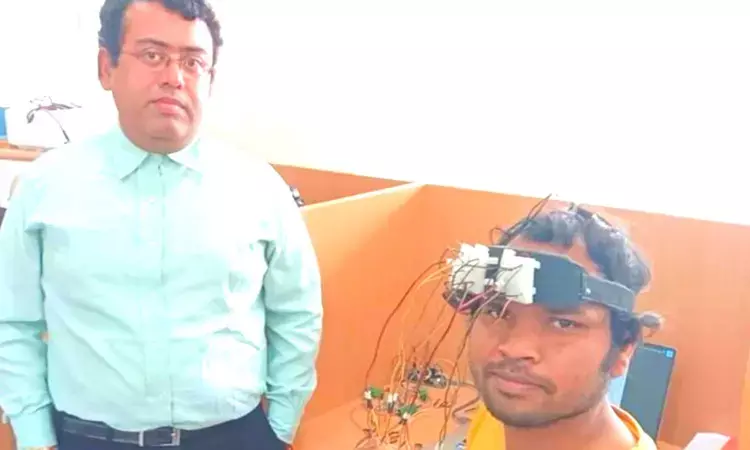- Home
- Medical news & Guidelines
- Anesthesiology
- Cardiology and CTVS
- Critical Care
- Dentistry
- Dermatology
- Diabetes and Endocrinology
- ENT
- Gastroenterology
- Medicine
- Nephrology
- Neurology
- Obstretics-Gynaecology
- Oncology
- Ophthalmology
- Orthopaedics
- Pediatrics-Neonatology
- Psychiatry
- Pulmonology
- Radiology
- Surgery
- Urology
- Laboratory Medicine
- Diet
- Nursing
- Paramedical
- Physiotherapy
- Health news
- Fact Check
- Bone Health Fact Check
- Brain Health Fact Check
- Cancer Related Fact Check
- Child Care Fact Check
- Dental and oral health fact check
- Diabetes and metabolic health fact check
- Diet and Nutrition Fact Check
- Eye and ENT Care Fact Check
- Fitness fact check
- Gut health fact check
- Heart health fact check
- Kidney health fact check
- Medical education fact check
- Men's health fact check
- Respiratory fact check
- Skin and hair care fact check
- Vaccine and Immunization fact check
- Women's health fact check
- AYUSH
- State News
- Andaman and Nicobar Islands
- Andhra Pradesh
- Arunachal Pradesh
- Assam
- Bihar
- Chandigarh
- Chattisgarh
- Dadra and Nagar Haveli
- Daman and Diu
- Delhi
- Goa
- Gujarat
- Haryana
- Himachal Pradesh
- Jammu & Kashmir
- Jharkhand
- Karnataka
- Kerala
- Ladakh
- Lakshadweep
- Madhya Pradesh
- Maharashtra
- Manipur
- Meghalaya
- Mizoram
- Nagaland
- Odisha
- Puducherry
- Punjab
- Rajasthan
- Sikkim
- Tamil Nadu
- Telangana
- Tripura
- Uttar Pradesh
- Uttrakhand
- West Bengal
- Medical Education
- Industry
IIT Mandi, PGI Chandigarh develop portable and low-cost device to detect Ischemic Stroke

"We are working towards finding a low-cost diagnostic technique to precisely detect ischemic stroke at the point of care so that such tests can be used in rural and remote areas. Our team has designed and developed a small wearable device that makes use of Near Infrared Spectroscopy to detect an ischemic stroke. In this device, a near-infrared light emitting diode emits light in the range of 650 nm to 950 nm," said Shubhajit Roy Chowdhury, associate professor, IIT-Mandi.
New Delhi: Researchers at the Indian Institute of Technology-Mandi, in collaboration with PGIMER Chandigarh, have developed a portable and cost-effective device to detect and diagnose ischemic stroke caused by impaired blood flow to the brain.
A research paper describing the device and its operation was recently published in IEEE Sensors Journal.
According to the research team, ischemic stroke caused by insufficient or interrupted blood supply to part of the brain affects one in every 500 Indians a year. Surveys have shown that around 10 percent to 15 percent of all strokes affect people below 40 years of age.
The efficient management and treatment of stroke depend upon early identification and diagnosis. Currently, magnetic resonance imaging (MRI) and computer tomography (CT) techniques are considered the gold standard for ischemic stroke detection. While these are indeed reliable methods, they require considerable infrastructure and high cost, and are inaccessible to many communities in India – there is only one MRI service for every one million people in the country.
"We are working towards finding a low-cost diagnostic technique to precisely detect ischemic stroke at the point of care so that such tests can be used in rural and remote areas. Our team has designed and developed a small wearable device that makes use of Near Infrared Spectroscopy to detect an ischemic stroke. In this device, a near-infrared light emitting diode emits light in the range of 650 nm to 950 nm," said Shubhajit Roy Chowdhury, associate professor, IIT-Mandi.
"This light interacts with the coloured components of the blood like haemoglobin and provides information on blood characteristics such as regional oxygen saturation, regional oxygen consumption, and regional blood volume index," he added.
The IIT-Mandi team performed studies measuring the bio-markers under ischemic conditions at the forearm and at the frontal lobe of the brain. The researchers also validated their detector prototype through experimental occlusion of the forearm and evoked ischemic stroke at the frontal lobe, and found excellent diagnostic potential.
"A combined matrix of this information reflects the temporal dynamics of blood haemoglobin, which can help identify impaired or abnormal blood flow conditions at a local tissue. The bio-markers that we have used to study ischemic conditions are oxygen saturation, regional oxygen consumption, and regional blood volume index that could better predict ischemic conditions than other techniques," said Dalchand Ahirwar, research scholar, IIT-Mandi.
Also Read:IIT Madras develops Artificial Intelligence Tool 'PIVOT' for Personalized Cancer Diagnosis
Kajal Rajput joined Medical Dialogues as an Correspondent for the Latest Health News Section in 2019. She holds a Bachelor's degree in Arts from University of Delhi. She manly covers all the updates in health news, hospitals, doctors news, government policies and Health Ministry. She can be contacted at editorial@medicaldialogues.in Contact no. 011-43720751


